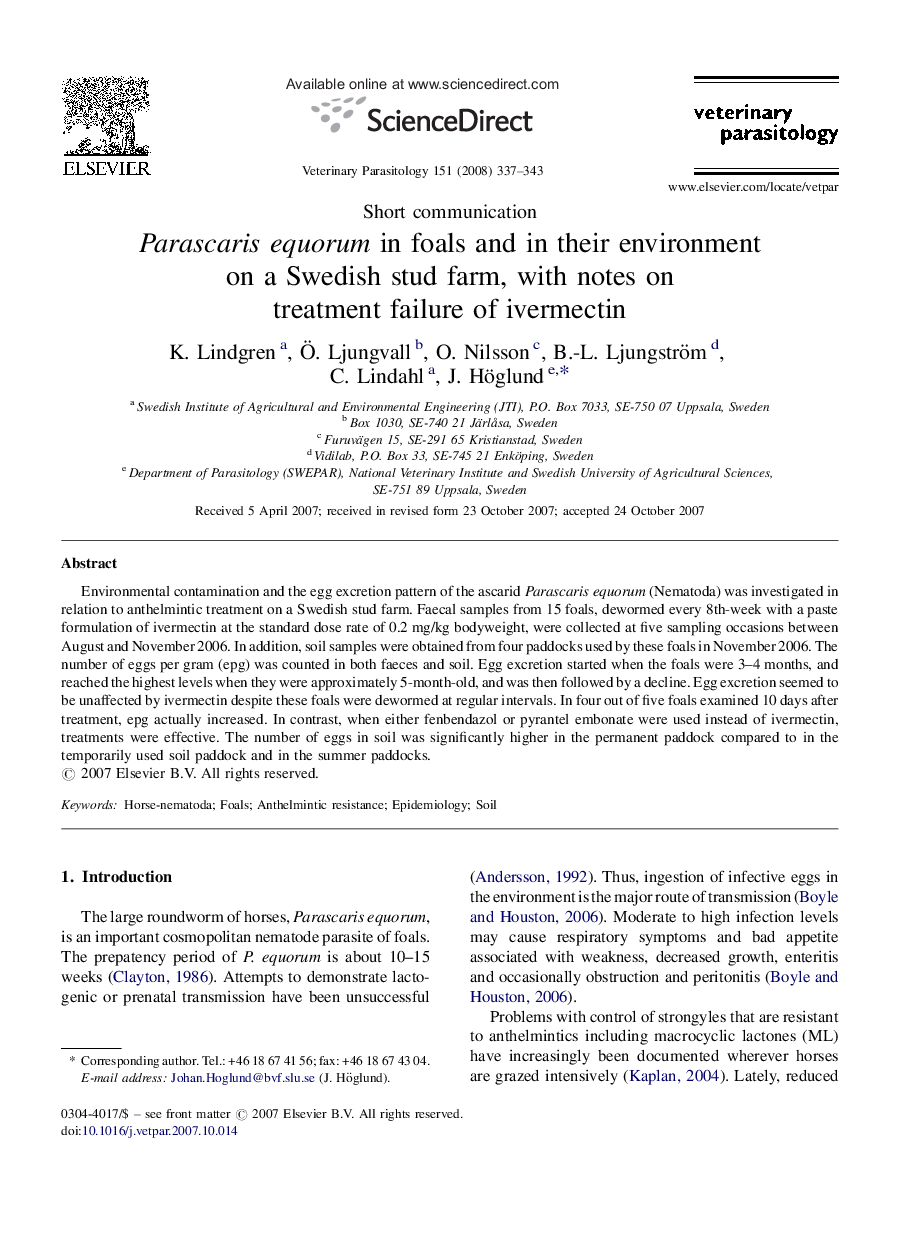| کد مقاله | کد نشریه | سال انتشار | مقاله انگلیسی | نسخه تمام متن |
|---|---|---|---|---|
| 2471664 | 1555773 | 2008 | 7 صفحه PDF | دانلود رایگان |

Environmental contamination and the egg excretion pattern of the ascarid Parascaris equorum (Nematoda) was investigated in relation to anthelmintic treatment on a Swedish stud farm. Faecal samples from 15 foals, dewormed every 8th-week with a paste formulation of ivermectin at the standard dose rate of 0.2 mg/kg bodyweight, were collected at five sampling occasions between August and November 2006. In addition, soil samples were obtained from four paddocks used by these foals in November 2006. The number of eggs per gram (epg) was counted in both faeces and soil. Egg excretion started when the foals were 3–4 months, and reached the highest levels when they were approximately 5-month-old, and was then followed by a decline. Egg excretion seemed to be unaffected by ivermectin despite these foals were dewormed at regular intervals. In four out of five foals examined 10 days after treatment, epg actually increased. In contrast, when either fenbendazol or pyrantel embonate were used instead of ivermectin, treatments were effective. The number of eggs in soil was significantly higher in the permanent paddock compared to in the temporarily used soil paddock and in the summer paddocks.
Journal: Veterinary Parasitology - Volume 151, Issues 2–4, 14 February 2008, Pages 337–343